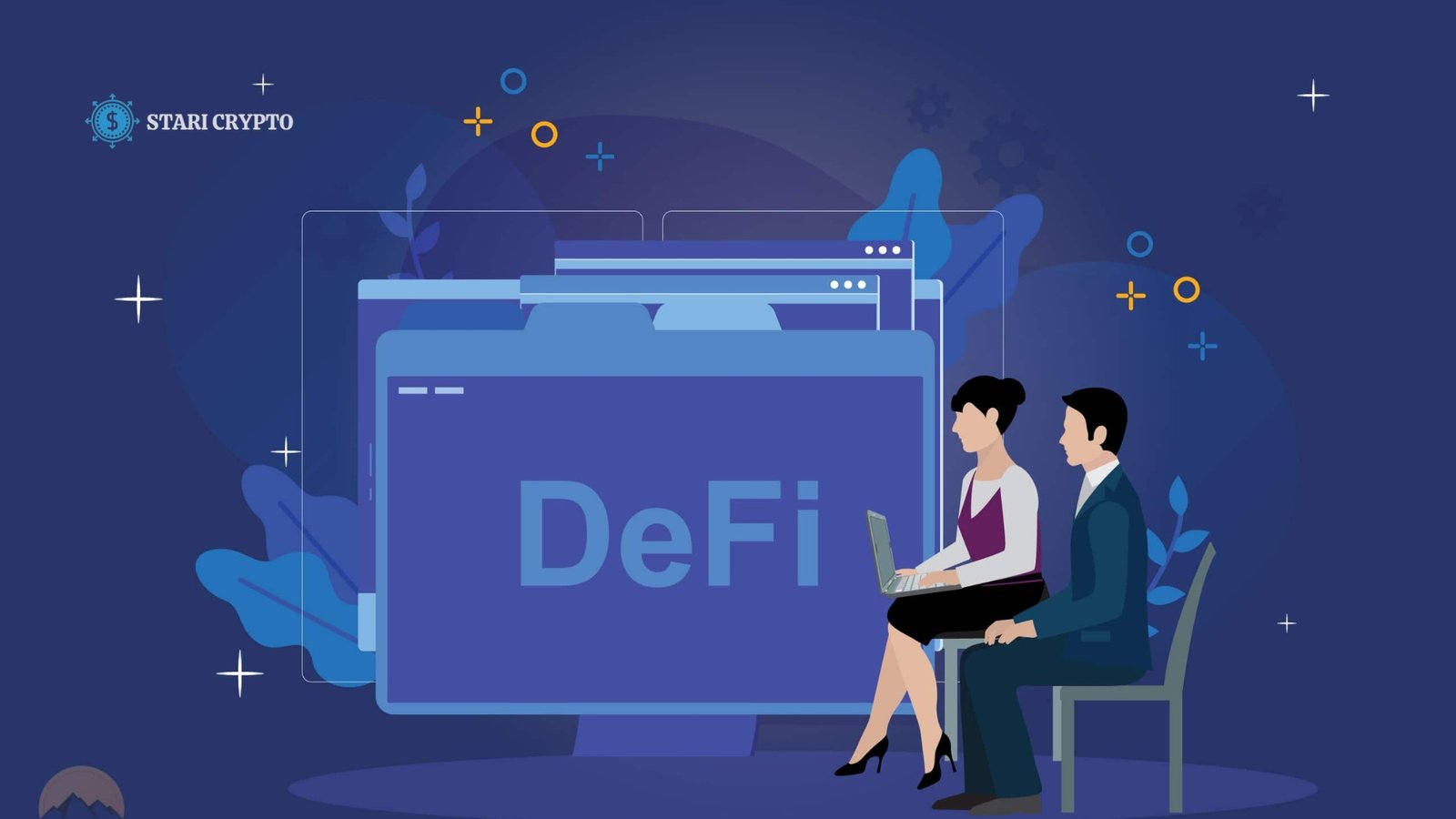Future of Defi: One of the fastest-growing cryptocurrency and blockchain sectors, decentralized finance (DeFi) is revolutionizing traditional financial services. DeFi’s quick growth in 2024 will present new price prediction opportunities and problems. In unpredictable and ever-changing decentralized financial markets, investors and traders increasingly use price prediction models to make judgments. This essay will discuss the DeFi price projection in 2024, the factors affecting token values, the prediction techniques, and the impact of sophisticated technology like AI. We’ll also discuss DeFi pricing prediction difficulties and potential.
DeFi’s Expansion in 2024
Launches of new platforms and protocols across various blockchain networks indicate that DeFi is still gaining traction in 2024. With no signs of slowing down, the total value locked (TVL) on DeFi platforms is already over $100 billion. Contributing to DeFi’s rising usage are advancements in decentralized exchanges (DEXs), cross-chain interoperability, and Layer 2 scaling solutions.
With the development of more advanced methods for predicting prices, DeFi has also expanded. Due to factors like supply and demand, market sentiment, technology advancements, and regulatory updates, as well as the significant volatility of DeFi assets, reliable forecasting methods are essential. Investors seeking to optimize profits while minimizing risks will find price prediction in such a complex ecosystem to be crucial.
Factors Influencing DeFi Price Prediction in 2024
The method of predicting the price of DeFi in 2024 is complex and vital for investors, as it is influenced by several aspects. Because the general public’s opinion of DeFi projects expressed in online forums and social media can have a substantial impact on their value, market sentiment will remain an important factor. The rate of adoption is another factor to consider; when DeFi protocols are used by more and more people and institutions, the demand for native tokens increases, which in turn drives up prices.

As governments around the world set up DeFi frameworks, it will be extremely important for regulations to be clear. Restrictive regulations may cause downturns, whilst lenient regulation could increase prices. Additional factors influencing price changes include technological developments like Layer 2 solutions, interoperability across chains, and enhanced security for smart contracts. Lastly, investment into DeFi will be affected by macroeconomic variables like inflation, interest rates, and worldwide economic instability, which can have a positive or negative impact on token values.
Defi Price Prediction in 2024
It takes a lot of work and a lot of instruments to predict how much DeFi tokens will be worth. By 2024, models used to forecast prices will incorporate a wide variety of on-chain and off-chain data sources. Among the most important approaches are:
Technical Analysis
Predicting future prices via technical analysis is still common practice. Forecasts are based on the analysis of past price action, patterns in the charts, and important indicators such as moving averages, the Relative Strength Index (RSI), and Fibonacci retracement levels. Even in 2024, TA will be an essential instrument for predicting short-term prices.
On-Chain Analysis
Examining blockchain data to forecast price fluctuations is known as on-chain analysis. Volume of transactions, number of active addresses, distribution of token supply, and inflows and outflows of liquidity are key metrics. To aid investors in making better predictions, tools such as Glassnode and Nansen shed light on these on-chain measures.
Artificial Intelligence and Machine Learning
Predictions on the price of DeFi in 2024 are likely to be heavily influenced by artificial intelligence and machine learning. By analyzing massive volumes of data, these technologies can spot trends that humans would miss. To improve the accuracy of price predictions for DeFi tokens, machine learning algorithms can examine sentiment, market movements, historical data, and even international news.
Sentiment Analysis
To gauge how the market feels about particular DeFi projects, sentiment analysis techniques peruse news stories, forums, and social media. These techniques aid in predicting short-term market swings by determining if the general sentiment is bullish or negative. By 2024, artificial intelligence (AI)-powered models will have improved sentiment analysis to the point that they can forecast market sentiment in real time.
Defi-Specific Indicators
Liquidity pool performance, lending/borrowing rates, and total value locked (TVL) in DeFi protocols are a few indicators that are unique to DeFi. The future value of DeFi tokens can be forecasted by keeping an eye on certain DeFi-specific indicators. A protocol’s token price may climb, for instance, in response to an unexpected uptick in TVL, which may indicate increased interest in the protocol.
Challenges in Predicting DeFi Prices
- Market Volatility: DeFi markets are inherently volatile. Prices can swing drastically in short periods due to liquidity constraints, market manipulation, or sudden changes in investor sentiment. This volatility makes it challenging to predict DeFi token prices with precision, particularly in the short term.
- Security Risks: DeFi is still a relatively new and evolving space, and security risks such as smart contract vulnerabilities and hacks are common. These risks can lead to sudden price drops, making predictions difficult. Investors should factor in these risks when predicting prices, especially for smaller or newer DeFi projects.
- Regulatory Uncertainty: The regulatory environment for DeFi remains uncertain, and new regulations could affect the price of DeFi tokens. Predictions must consider the impact of potential legal frameworks, especially in jurisdictions like the U.S., Europe, and Asia.
The Role of AI in DeFi Price Prediction
In 2024, artificial intelligence will play a pivotal role in determining how DeFi prices are predicted. Historical price data, emotion analysis, blockchain measurements, and global economic indicators are just a few examples of the massive datasets that AI-powered models can sift through. The forecasts generated by these models are more precise and up-to-date than those from more conventional approaches.

Also, traders can employ AI-powered automated trading techniques in DeFi to place trades based on algorithms that predict market movements. The accuracy of DeFi price forecasts will be improved by more advanced price prediction algorithms that can anticipate market moves in real time, which is anticipated to happen as AI technology progresses.
More Read: Base NFTs, Ultimate Guide to Non-Fungible Tokens.
In Summary
Some factors, including changes in technology, market mood, new regulations, and macroeconomic conditions, will influence the 2024 DeFi pricing forecast. Even while it’s still difficult to estimate costs with 100% accuracy, AI and other cutting-edge methods are bringing prices much closer to reality. To keep up with the ever-changing DeFi market, investors will need price prediction models more and more as the platform develops and becomes more established.
FAQs
1. What factors influence DeFi price predictions in 2024?
DeFi price predictions are influenced by market sentiment, technological advancements, adoption of DeFi protocols, regulatory changes, and macroeconomic factors. Additionally, factors like on-chain data and AI-driven analytics play a critical role in forecasting price movements.
2. How does AI improve DeFi price prediction?
AI improves DeFi price prediction by analyzing large volumes of data from multiple sources in real time. AI-driven models can identify patterns, trends, and correlations that human analysts may overlook, leading to more accurate price predictions.
3. Is predicting DeFi prices accurate?
While price prediction models offer valuable insights, predicting DeFi prices with 100% accuracy is challenging due to market volatility, security risks, and external factors like regulation. Investors should use predictions as part of a broader investment strategy.
4. What tools are used for DeFi price prediction?
Common tools for DeFi price prediction include technical analysis (TA), on-chain analysis platforms (like Glassnode), sentiment analysis tools, AI-driven models, and DeFi-specific indicators such as total value locked (TVL) and liquidity pool performance.
5. How will regulation affect DeFi prices in 2024?
Regulation is expected to play a significant role in DeFi markets in 2024. Positive regulatory clarity could boost prices by increasing institutional participation, while restrictive regulations could negatively impact some DeFi tokens.

















